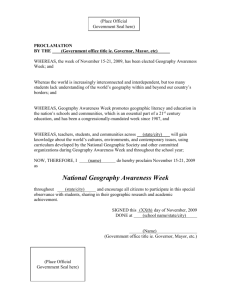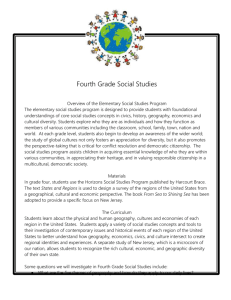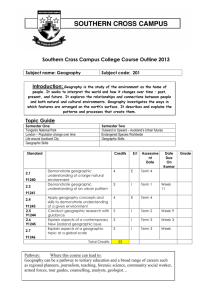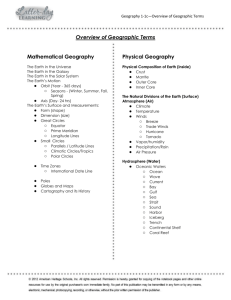166 KB - Education and Advanced Learning
advertisement
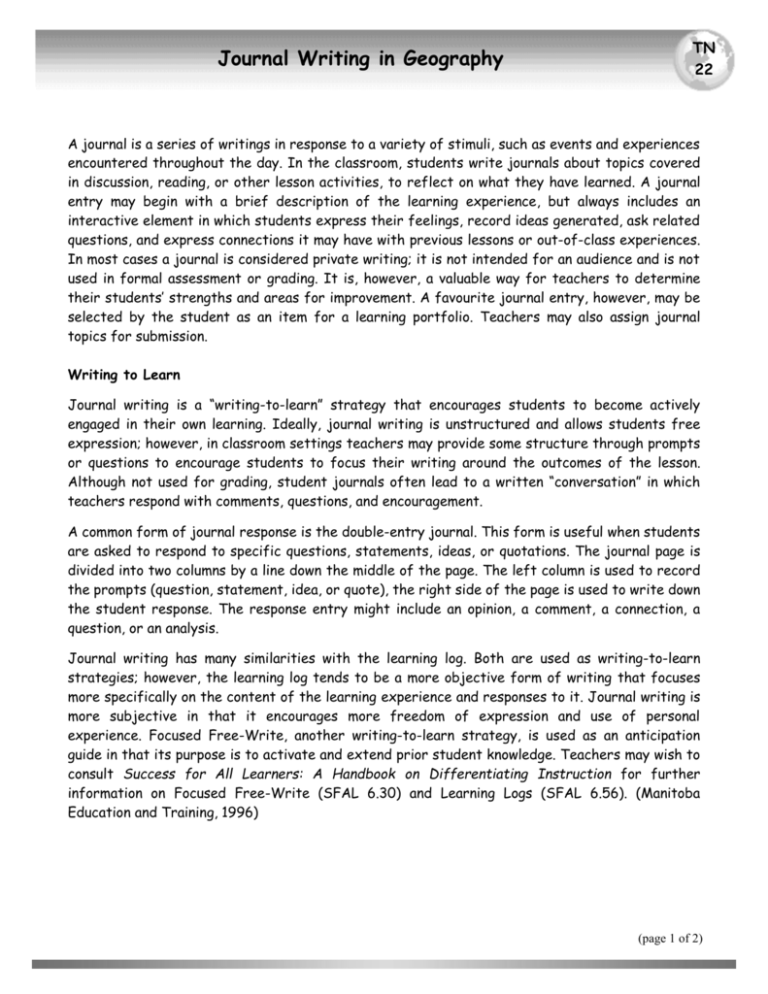
Antiti Journal Writing in Geography TN 22 A journal is a series of writings in response to a variety of stimuli, such as events and experiences encountered throughout the day. In the classroom, students write journals about topics covered in discussion, reading, or other lesson activities, to reflect on what they have learned. A journal entry may begin with a brief description of the learning experience, but always includes an interactive element in which students express their feelings, record ideas generated, ask related questions, and express connections it may have with previous lessons or out-of-class experiences. In most cases a journal is considered private writing; it is not intended for an audience and is not used in formal assessment or grading. It is, however, a valuable way for teachers to determine their students’ strengths and areas for improvement. A favourite journal entry, however, may be selected by the student as an item for a learning portfolio. Teachers may also assign journal topics for submission. Writing to Learn Journal writing is a “writing-to-learn” strategy that encourages students to become actively engaged in their own learning. Ideally, journal writing is unstructured and allows students free expression; however, in classroom settings teachers may provide some structure through prompts or questions to encourage students to focus their writing around the outcomes of the lesson. Although not used for grading, student journals often lead to a written “conversation” in which teachers respond with comments, questions, and encouragement. A common form of journal response is the double-entry journal. This form is useful when students are asked to respond to specific questions, statements, ideas, or quotations. The journal page is divided into two columns by a line down the middle of the page. The left column is used to record the prompts (question, statement, idea, or quote), the right side of the page is used to write down the student response. The response entry might include an opinion, a comment, a connection, a question, or an analysis. Journal writing has many similarities with the learning log. Both are used as writing-to-learn strategies; however, the learning log tends to be a more objective form of writing that focuses more specifically on the content of the learning experience and responses to it. Journal writing is more subjective in that it encourages more freedom of expression and use of personal experience. Focused Free-Write, another writing-to-learn strategy, is used as an anticipation guide in that its purpose is to activate and extend prior student knowledge. Teachers may wish to consult Success for All Learners: A Handbook on Differentiating Instruction for further information on Focused Free-Write (SFAL 6.30) and Learning Logs (SFAL 6.56). (Manitoba Education and Training, 1996) (page 1 of 2) Antiti TN 22 Journal Writing in Geography Journals in Geography The process and rationale for journal writing is the same in geography as in any other discipline. The nature of student responses to geographic learning experiences, however, may be different in that they reflect the geographic viewpoint and the nature of geographic questions. More precisely, a geographic journal might be modeled on the components of the definition of geography as explored in Learning Experience 1.1: “What Is Geography?” (namely, what is the phenomenon in question, where is it located, why is it located there, and why is this important?). The latter two components in particular allow for much freedom of expression of personal interpretation and feelings, posing of related questions, and examples of connections to the students’ real-life knowledge and experiences. Teachers may wish to consult the following sources for related information: “Geography: More than a Subject in School” (TN 1); “The Nature of Geography” (TN 2); “What Is Where, Why There, and Why Care?” (TN 3); and “Asking Geographic Questions” (TN 11). Practical Considerations: Teachers should determine the purpose of using journal writing in class and how the journals will be used. Students should be fully aware, if not engaged in the process of decision making, of the rationale of journal writing, its uses, and related expectations. Select appropriate format (separate notebook, section in loose-leaf binder, etc.). Teachers should model initial journal entries by developing initial entries working with the class, using a flip chart or overhead projector. As students become familiar with teacher expectations, they may develop journal entries in pairs prior to writing individual entries. Teachers should provide immediate response to the student’s first independently written journal entry. Regular class time should be scheduled for journal writing at the start, middle, or end of a class. Use the journal writing strategy frequently throughout the course. Prompt, regular, and meaningful teacher feedback and dialogue will ensure the success of journal writing as an effective learning strategy. (page 2 of 2)


